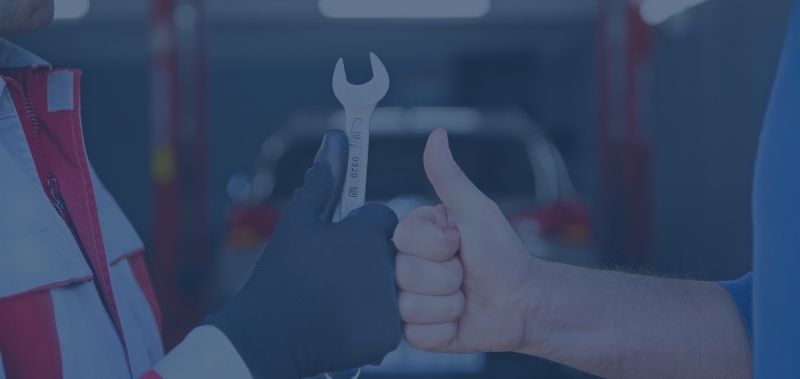Customer attrition is a key business metric that every repair shop owner should be aware of and measure. Some attrition is inevitable but minimizing this key factor will undoubtedly mean the difference between a successful repair shop and a failed one. Customer attrition is defined as the loss of customers by a business. The customer attrition rate indicates the percentage of customers that are lost over a specified time period. Understanding your customer attrition rate will help you plan more effective sales and marketing activities.
According to the Harvard Business Review, increasing customer retention rates by 5% increases profits by 25% to 95%.
R.O. Writer understands how important customer retention is for shop owners. This is why R.O. Writer works with Auto Apps, a software designed to help shop owners measure their customer retention rates. Auto Apps is exclusive for R.O. Writer customers. Paul Stewart, President of Auto Apps, provides his insight below into how customer attrition affects repair shops, things shop owners should watch out for, and tips to keep customers coming back to your shop.
Understanding Key Customer Attrition Numbers
Auto Apps has completed hundreds of customer analyses on service centers across the United States and
Canada over the past seven years. Nationwide the data has shown 50% to 60% of the total customers serviced will not return the following calendar year.
Customer attrition should be managed and measured by Total, New, Returning, and Best Customers. Listed below is the national average of the percentage of customers who did not return to the service center the following calendar year.
- Total Customers – 50% to 60% did not return
- New Customers – 60% to 70% did not return
- Returning Customers – 30% to 40% did not return
- Best Customers – 25% to 35% did not return
The Biggest Reason Customers Do Not Return
Most customers do not return because the service experience was neutral, the service was ok, but they were not “Wowed.” Referred customers are easy to sell because they already trust the person who referred them. Unfortunately, many of them don’t return because of a neutral experience.
Making accurate and timely follow-ups and enhancing the service experience, are keys to improving customer retention. Think about when someone you trust raves about a restaurant or movie, then you go with great expectation, and the meal or movie was ok, you are a little disappointed.
A neutral service experience is the number one reason why new and returning customers do not return.
Growing your Best Customer Base is Key to Success
Retaining and growing your best customers will help increase your profits. Best customers typically have three or more visits per year and spend $1,800 plus dollars annually. Turning new and returning customers into the best customers is key to increasing sales. A customer loyalty program is a great option for providing additional value to your best customers.
Returning and Best Customers are the Heartbeat of your Business
Returning and best customers should account for 70% to 80% of your monthly revenue. Your goal is to see your customers multiple times a year, allowing you to build stronger relationships with each visit.
Auto Apps feature, RSS Insights, allows you to track these numbers instantly. You can manage and measure the health of your business in one dashboard.
In the Auto Apps dashboard, you can click on any of the boxes (shown in the picture above) and get detailed information about the data. An example is the New and Returning customer box, one click and you get sales, customer mix, and percentage of sales, click again and see the actual customers and vehicles. This is one of the most powerful dashboards you’ll ever work with, providing you key profit data that will display in seconds on your phone or desktop.
The Vehicle Life Plan Feature Helps Build Strong Relationships
The Auto Apps “Vehicle Life Plan” feature that is available to R.O. Writer users, allows service advisors to educate customers. The service advisor becomes an advocate, working with the customer to understand their maintenance intervals based on time and mileage, and when they need to be completed. An educated customer is one of your best customers.
The service advisor clicks on auto-fill, and the “Vehicle Life Plan” updates from the current R.O. Writer repair order and previous history. The one-page color document is easily read and understood by the customer.
The DVI “Digital Vehicle Inspection” feature provided by R.O. Writer, combined with the “Vehicle Life Plan” tool, allows your service advisors to naturally discuss maintenance, recommend service and repair, and automatically track the next oil service mileage and due date.
Solving your customers’ transportation needs includes educating them on recommended maintenance and prioritizing service needs based on maintenance, safety issues, needed repair, and items to monitor. Declined service can now be marketed with the next oil service, and timely follow-up increases future sales and keeps the customers coming back.
Tracking the next oil service due date on every vehicle you want back in your service center is one of the easiest ways to increase visits and retention, and the “Vehicle Life Plan” makes it a breeze.
You will also sell more maintenance simply because it is top of mind and viewed on every vehicle.
Service Connect Makes Customer Follow-Up Easy
In 10 minutes or less, the service advisor can review and update follow-up on their closed repair orders with the Service Connect feature. Service Connect allows you to update the next oil service due date for every vehicle, add recommend services to that date, and also update vehicle and customer notes so anyone can do the follow-up.
This updated service follow-up then triggers emails and letters in the R.O. Writer follow-up feature, and the updated due table enhances the customer touches, making your automated CRM program better and more accurate.
Letters, emails, text messages, and phone calls do work. Service Connect Follow-up allows you to track and make personalized phone calls, create a phone list and send personalized text messages for each customer.
In Conclusion
Return customers are the key to business success. Shop management software can help customer retention become a natural part of your service center’s process. Use shop management features like those mentioned in this blog, to improve your customer’s experience and to help you make educated marketing and sales decisions.



